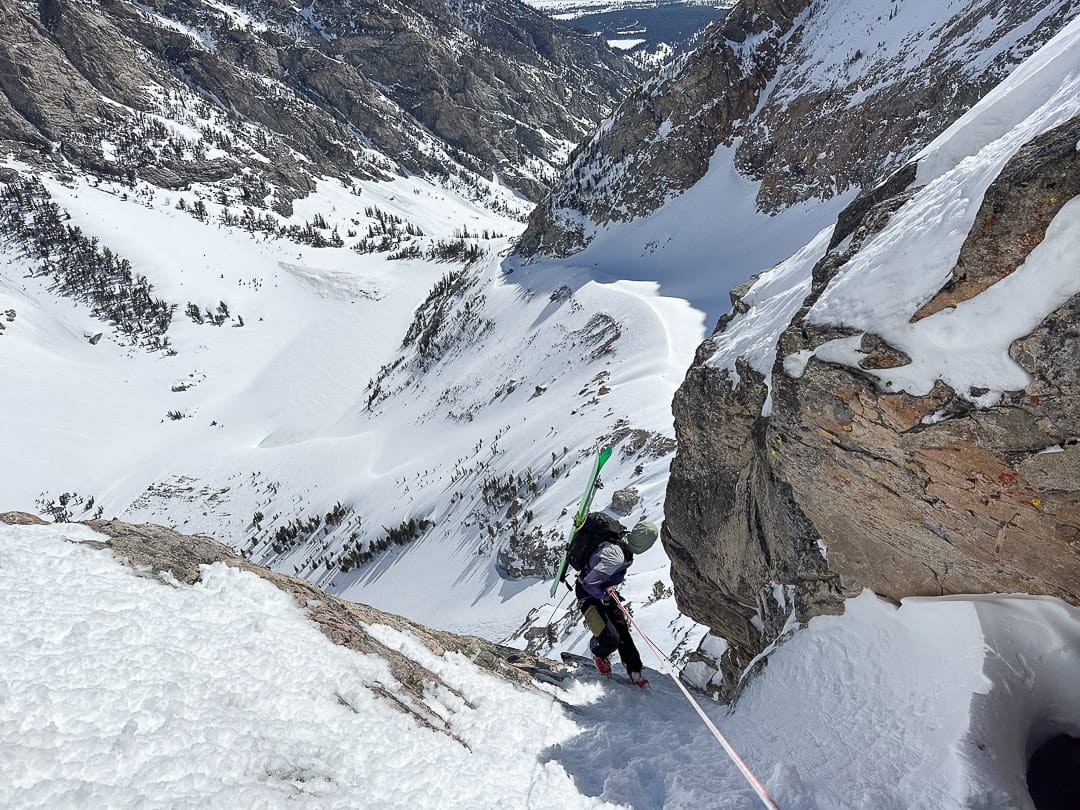This is true; slipping your foot into a fine-fitting touring boot is like sipping from a goblet of euphoria. I think that is how I remember it when I first slipped on a Fischer Travers in 2016. Mind you, I had wandered in TLT 5 and 6 purgatory. In the original Travers, I found a comfortable and fine-performing boot I skied from mid-winter through late-spring volcano romps. In total, the package worked for me. Yes, I liked the BOA. I burned through the liners in due time. I trashed the buckle-velcro combo power strap and found replacements cannibalized from a recalled version of the Travers with the pure carbon cuff. They were my go-to for many seasons.
The truth is, Fischer hasn’t changed the boot much in nearly a decade. Sure, this may be the punctuated equilibrium period of 1000kg class boots, but Fischer seemed to have landed on something that worked for many. Why change a good thing?
Well, when the competition evolves incrementally year after year, an older design and material set may not be optimized for our new touring expectations. Next season, Fischer will release the revamped Travers series, with four boots in total. We’ve got our hands on the Travers Carbon Pro, which is marketed as the lightest and stiffest of the line. Here’s the first look.




A few notes first. I’m normally a straight-up 27-27.5 fit. Ideally, I find a 27-liner works best for me if I’m in a 27.5 shell—but this is boot-dependent. (Dynafit offers a 27 or 27.5 liner in the Blacklights.) My first Travers were 27.5s (296mm BSL). The early release I have here is a 26.5 (286mm). For context, I use a Scarpa Alien 1.1 in a 27, which is a 287mm BSL, and I can be comfortable in those light shoes for lengthy missions. Upon arrival, I heat molded new Travers Carbon Pro liners; I now have what feels like a high-performance fit until the liner packs out a bit more.
Let’s examine the upgrades; the shell and cuff are what Fischer calls CARBONFUSED—which is carbon-infused Pebex. Generally, you’ll be looking at a stiffer flexing boot compared to past Travers iterations in the Travers Carbon Pro. The early carpet testing bears this out and the forward flex feels on par with the La Sportiva Kilo. The double/lock ski walk mechanism and molding on the rear cuff appear borrowed from the Transalp Carbon Pro. The lever is simple to operate and snaps in and out of place like it means it. The ROM and reduced forward and back friction remain. I walked around the house yesterday doing laundry and cooking dinner in these boots: they are functional and adroit walking here and there. Compared to the new ROM/friction standard set by the Kilo, the Travers Carbon Pro feels similar flexing backward in walk mode, with a bit more friction in the forward direction. I think this is a function of thicker foam on the Travers’ liner in the ankle flexion zone.
The boot sole gains traction and durability with Litebase Vibram (sticky-ish rubber but thinner to save weight), with the classic plate of Kevlar as the sole’s underbelly to add rigidity. The lower shell is secured over the foot with a BOA closure system. See photos for a more thorough explanation, but know the closure system is updated—no more brass rollers to guide the tensioning cable. Although we are fond of those, let’s call it progress. The BOA cable is now threaded around protected metal fittings. The BOA itself is the new H4 BOA. The H4 is marketed as more durable and easier to repair. The dial cartridge is a breakaway design that should pop off and not break on impact. BOA claims it’s easy to pop the cartridge back on. The base unit attaching the BOA to the shell connects with four Torx screws. For those interested in a lightweight expedition or traverse-oriented boot, fixing the H4 BOA looks relatively simple. Just have spare parts handy.
The gaiter affixed to the lower shell is redesigned, looks/feels robust and extends high up the liner’s tongue. And yes, for those Travers purists, there remains, however, in a somewhat new form, a weatherproof rubber tongue one must press into place (into the U-shaped cutout over the forefoot) after inserting your foot into the boot and before tensioning the BOA.
The upper cuff is secured with a single velcro strap-sliding buckle, similar to the old Travers, for fast transitions and, we hope, well-supported skiing.








The fit, generally, feels on par with past Travers. The toe box is slim, but not overly so for my foot, and the claimed last in the 26.5, 100mm, feels accurate. For those looking for a splay-your-toes-out toe box, test before you buy to ensure the fit works for you. The room over the arch is ample, yet the volume is easily and nicely reduced with the (dare I say it) best BOA closure system I’ve used. There’s always room for improvement and damn if this system doesn’t snug around the feet like a custom made slipper.
Your foot is housed in a well-designed Italien-shaped liner complete with high-quality benchmarks. The sewing is tight and clean, the foam robust (maybe too much?) and Vibram (yes Vibram) patches in spots to keep the tongue in place.
Other than a fine looking and promising iteration of the Travers template, the craftsmanship of the shell, fittings, and liner appear to be top-shelf.
Updated Notes
I just took the boots for a spin—decent snow, very light for these parts, maybe 5”-6” of powder. For the first time, I used Moonlight Carbon Superlight skis (177cm 114mm underfoot), very light for what they are, verified under 1200g/ski, and I very much enjoyed the Travers Carbon Pro driving them. In my eyes, the expectation nowadays is that under the right conditions, lighter-weight boots in the 1kg+ category should be able to drive a modestly wide ski in lighter, dry powder. This boot seems to check that box with this powder ski.
Stats
Weight (26.5) shell only: 894g
Weight (26.5) liner + stock insole only: 294g
Weight plastic spoiler: 34g
The whole package (no laces) size 26.5: 1,222g
Forward lean: 13 degrees or 17 degrees with spoiler
ROM: plenty







Leave a Reply
You must be logged in to post a comment.